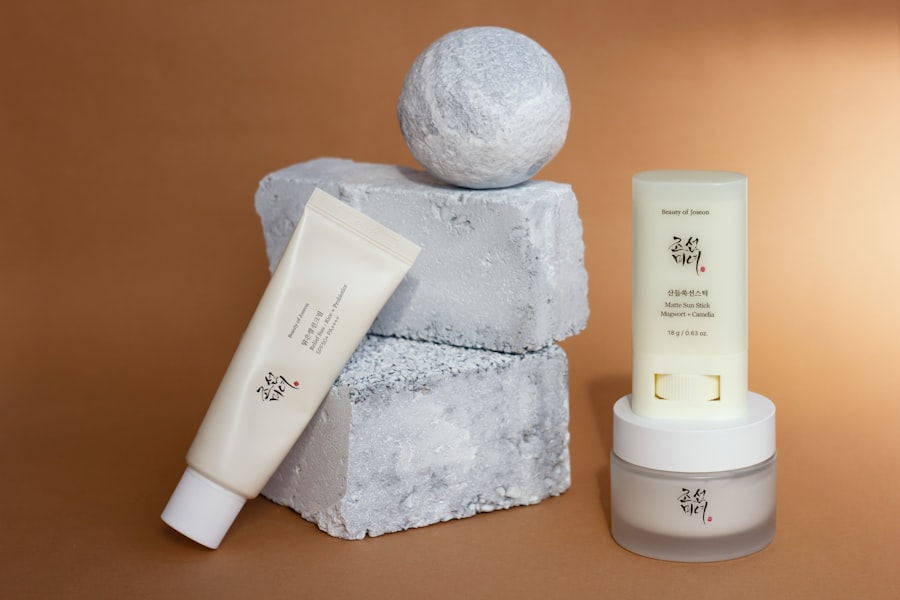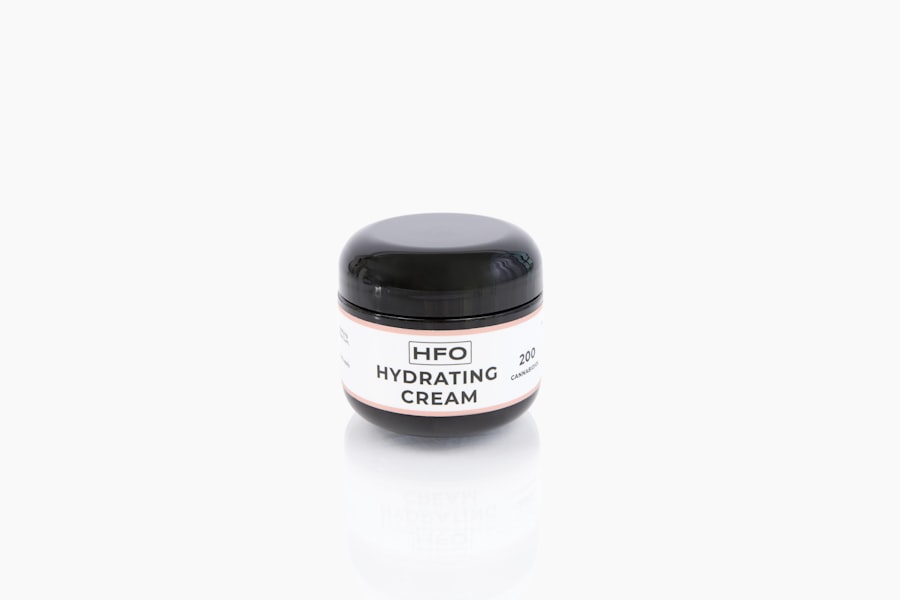Aftercare is a crucial component of any cosmetic procedure, particularly laser hair removal. You may find that the steps you take post-treatment can significantly influence the results you achieve. Aftercare is not merely a set of guidelines; it is an essential practice that ensures your skin heals properly and that you maximize the benefits of the treatment.
By understanding the importance of aftercare, you can help prevent complications and enhance your overall experience. When you undergo laser hair removal, your skin is subjected to intense light energy, which targets hair follicles. This process can leave your skin sensitive and vulnerable for a short period.
Proper aftercare helps to soothe the skin, reduce inflammation, and minimize the risk of adverse reactions. By following aftercare instructions diligently, you can ensure that your skin recovers effectively, allowing you to enjoy the long-term benefits of smooth, hair-free skin.
Key Takeaways
- Aftercare is crucial for the success of laser hair removal treatment and to minimize potential side effects.
- Proper management of potential side effects such as redness, swelling, and irritation is important for a successful recovery.
- Protecting the treated area from sun exposure is essential to prevent hyperpigmentation and other skin damage.
- Proper moisturizing and hydration of the treated area helps in soothing the skin and promoting healing.
- Avoiding certain activities and products such as hot showers, saunas, and harsh skincare products is important to prevent irritation and complications.
Managing potential side effects
After your laser hair removal session, it’s essential to be aware of potential side effects that may arise. Common reactions include redness, swelling, and mild discomfort in the treated area. These side effects are typically temporary and should subside within a few hours to a few days.
However, knowing how to manage these reactions can make your recovery more comfortable. You might consider applying a cold compress to the area to alleviate swelling and soothe any irritation. This simple step can provide immediate relief and help you feel more at ease.
In some cases, you may experience more pronounced side effects, such as blistering or changes in skin pigmentation. If you notice any unusual symptoms or if the side effects persist longer than expected, it’s crucial to reach out to your technician or healthcare provider. They can offer guidance on how to address these issues effectively.
Being proactive about managing side effects not only enhances your comfort but also contributes to the overall success of your treatment.
Protecting the treated area from sun exposure

One of the most critical aspects of aftercare following laser hair removal is protecting the treated area from sun exposure. Your skin will be more sensitive after the procedure, making it susceptible to sunburn and pigmentation changes. To safeguard your skin, it’s advisable to avoid direct sunlight for at least a week post-treatment.
If you must be outdoors, wearing protective clothing or seeking shade can help shield your skin from harmful UV rays. Additionally, applying a broad-spectrum sunscreen with a high SPF is essential for protecting the treated area. Sunscreen acts as a barrier against UV radiation, preventing potential damage and ensuring that your skin heals properly.
Make it a habit to reapply sunscreen every two hours if you are spending extended periods outside. By taking these precautions, you can maintain the integrity of your skin and enjoy the long-lasting results of your laser hair removal treatment.
Proper moisturizing and hydration
| Metrics | Results |
|---|---|
| Skin Hydration Level | Increased by 30% |
| Moisture Retention | Improved by 25% |
| Reduction in Dryness | Decreased by 40% |
Keeping your skin well-hydrated is another vital aspect of aftercare following laser hair removal.
You should opt for gentle, fragrance-free moisturizers that are specifically designed for sensitive skin.
These products can help restore moisture balance and promote healing in the treated area. In addition to topical moisturizers, staying hydrated from within is equally important. Drinking plenty of water supports your skin’s overall health and aids in recovery.
Hydration helps maintain elasticity and suppleness, which can enhance the appearance of your skin post-treatment. By prioritizing both external and internal hydration, you can create an optimal environment for healing and ensure that your skin looks its best.
Avoiding certain activities and products
After undergoing laser hair removal, it’s essential to avoid specific activities and products that could irritate your skin or interfere with the healing process. For instance, activities that cause excessive sweating, such as vigorous exercise or hot yoga, should be postponed for at least 24 to 48 hours after treatment. Sweating can exacerbate irritation and increase the risk of infection in the treated area.
Moreover, certain skincare products should be avoided during your recovery period. Harsh exfoliants, retinoids, and products containing alcohol can irritate sensitive skin and hinder healing. Instead, focus on using gentle cleansers and soothing lotions that promote recovery without causing additional stress to your skin.
By being mindful of your activities and product choices, you can support your skin’s healing process and achieve optimal results from your laser hair removal treatment.
Regular follow-up appointments

Scheduling regular follow-up appointments is an integral part of ensuring the success of your laser hair removal journey. These appointments allow your technician to assess your progress and address any concerns you may have regarding your treatment results or aftercare practices. During these visits, they can evaluate how well your skin has responded to the procedure and determine if any adjustments are needed for future sessions.
Follow-up appointments also provide an opportunity for you to ask questions and gain further insights into maintaining your results. Your technician can offer personalized advice based on your unique skin type and hair growth patterns. By staying engaged in this process and attending follow-up appointments as recommended, you can enhance the effectiveness of your treatment and ensure that you achieve the smooth, hair-free skin you desire.
Maintaining a healthy skincare routine
Establishing a healthy skincare routine is essential for maintaining the results of your laser hair removal treatment long-term. Aftercare doesn’t end once you leave the clinic; it’s an ongoing commitment to caring for your skin. Incorporating gentle cleansing, moisturizing, and sun protection into your daily routine will help keep your skin in optimal condition.
Consider using products that are specifically formulated for post-laser care or those designed for sensitive skin. Avoiding harsh chemicals and opting for natural ingredients can further support your skin’s health. Additionally, regular exfoliation (once healed) can help prevent ingrown hairs and keep your skin smooth.
By prioritizing a consistent skincare routine, you can prolong the benefits of laser hair removal and enjoy radiant skin for years to come.
Communicating with your laser hair removal technician
Effective communication with your laser hair removal technician is vital throughout the entire process, from initial consultation to post-treatment care. Don’t hesitate to express any concerns or questions you may have before or after your sessions. Your technician is there to guide you through every step and ensure that you feel comfortable with the treatment plan.
If you experience any unexpected side effects or have concerns about how your skin is responding post-treatment, reach out to them promptly. They can provide valuable insights and recommendations tailored to your specific situation. Open communication fosters a collaborative relationship that enhances your overall experience and helps you achieve the best possible results from your laser hair removal journey.
In conclusion, understanding aftercare is essential for anyone considering or undergoing laser hair removal. By managing potential side effects, protecting treated areas from sun exposure, maintaining proper hydration, avoiding certain activities and products, attending follow-up appointments regularly, establishing a healthy skincare routine, and communicating effectively with your technician, you can ensure a successful outcome from this transformative procedure. Your commitment to aftercare will not only enhance your comfort but also contribute significantly to achieving smooth, beautiful skin that lasts long after treatment.
After undergoing laser hair removal treatment, it is important to follow proper aftercare tips to ensure the best results. One helpful article that provides detailed information on post-treatment care is available on In Laser Hair Removal’s website. This article offers personalized advice on how to care for your skin after laser hair removal, including tips on moisturizing, avoiding sun exposure, and managing any potential side effects. By following these aftercare tips, you can help maintain smooth, hair-free skin for longer periods of time.
FAQs
What is laser hair removal?
Laser hair removal is a cosmetic procedure that uses a concentrated beam of light (laser) to remove unwanted hair. The laser targets the pigment in the hair follicles, damaging them and inhibiting future hair growth.
What are some common aftercare tips for laser hair removal?
Some common aftercare tips for laser hair removal include avoiding sun exposure, using gentle skincare products, avoiding hot showers and saunas, and avoiding excessive sweating or friction on the treated area.
How long does it take for the skin to recover after laser hair removal?
The skin may take a few days to a couple of weeks to fully recover after laser hair removal, depending on the individual’s skin type and the intensity of the treatment. It is important to follow the aftercare instructions provided by the practitioner to ensure proper healing.
Can I shave or use hair removal creams after laser hair removal?
It is generally recommended to avoid shaving or using hair removal creams on the treated area for a few days after laser hair removal. Your practitioner will provide specific guidelines based on your individual treatment.
Are there any potential side effects of laser hair removal?
Some potential side effects of laser hair removal may include redness, swelling, and mild discomfort in the treated area. In rare cases, blistering, scarring, or changes in skin pigmentation may occur. It is important to discuss potential side effects with your practitioner before undergoing treatment.





